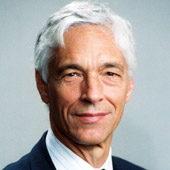Moving Toward Smarter Aid?
Can the Millennium Challenge Corporation overcome its slow start and recent setbacks?
August 19, 2005
The MCC, in existence for all but three years, has been seriously wounded. Congressional committees have once again sharply cut funding for the MCC from its requested appropriation level – for the third year in a row.
And the MCC’s first chief executive officer, Paul Applegarth, resigned under fire in mid-June 2005. A permanent successor – Ambassador John Danilovich – has now been proposed and will have to confront several pressing issues to ensure a successful future for the MCC.
President Bush’s proposal in March 2002 to create the Millennium Challenge Corporation surprised the world by its size and boldness. He promised to commit an additional $5 billion per year to poor countries pursuing sensible approaches to economic growth.
The major innovation was identifying potential recipient countries by using objective measures of ruling justly, investing in people and economic freedom.
Little happened for three years. The Bush Administration took a year to formulate a concrete proposal. The U.S. Congress took a year to massage the proposal and pass legislation to create the MCC.
Then, the MCC took another year to hire staff and gear up for negotiations with interested countries. Finally, in mid-April 2005, the MCC began signing agreements (“compacts”) with qualifying countries.
Since then, the Corporation has committed a total of $610 million to four countries: Madagascar is getting $110 million to reform the country’s land titling system, to create a check-clearing facility in the capital and to promote rural development.
Honduras will receive $215 million to build a segment of a national trunk road, feeder and secondary roads and to promote rural development. Another $110 million will go to Cape Verde to construct port and road infrastructure and to promote agriculture and private sector development.
And finally, Nicaragua will obtain $175 million to build a segment of the national trunk road and to promote rural development, including improvements in land titling, in two provinces.
Given this rather small amount of about $610 million, there are those who argue that the MCC has shown slow progress in achieving results.
But after reviewing progress to date, we have concluded that this common complaint about the MCC is not valid. The Corporation has achieved all that could be reasonably expected in the time available.
The current pressure to sign up more countries, or reach a particular funding level by some arbitrary date, is counterproductive. In particular, it undercuts the value of the consultative process that is unique to the MCC’s approach. The MCC has adopted a more bottom-up approach that fosters stronger country ownership.
However, not all is well at the Millennium Challenge Corporation. Our major concern is that the MCC appears to be drifting toward “more of the same.” Its first four country programs look too much like projects administered by the World Bank, USAID or other donors than bold innovations.
Indeed, among the first four countries, only in Cape Verde – with a population of only 500,000 – is the MCC likely to be one of the top two donors. To a large extent, the compacts simply complement, or provide additional funding for, activities already underway by traditional donors.
The first four country programs also suggest a reluctance to engage in fast-disbursing sector support or other more efficient arrangements. For example, the MCC could reimburse the government in an eligible country for what it spent to implement an outstanding, corruption-free school-building program.
Our second concern is a potentially serious problem of unmet expectations. A U.S. aid program operating at the rate of $2 billion to $3 billion per year is still worthwhile, but its means are so limited that tough trade-offs are looming.
Essentially, the MCC’s managers will have to decide whether they want to make a big impact in a limited number of countries or whether they want to give rather small amounts of aid to a larger group of countries.
In our view, it makes more sense to reduce the number of countries in the program than to reduce the amount of funding committed to each country.
The current legislation opens the door in fiscal year 2006 to MCC funding for countries that have annual per capita incomes somewhat above the initial group of poor countries. An obvious step to maximize the MCC’s impact in individual countries is to keep this door closed until funding levels in the $4 billion to $5 billion range become feasible.
Creativity and flexibility will be the keys to long-run success for the MCC. If building a better mousetrap to reduce world poverty were easy, some aid agency would have done it already. A different approach is required for every country, because the opportunities and constraints in each country are unique.
The MCC’s authorizing legislation includes three constraints inconsistent with the spirit of the program and with past experience: First, the legislation prohibits the MCC from having multiple agreements in a single country. Second, it limits the term of country agreements to five years. And third, it rules out agreements with sub-national government authorities or NGOs.
These constraints force round projects into square holes and should be removed at the earliest possible opportunity.
Will John Danilovich have a broad vision of the MCC’s role and the capacity to articulate this vision to a skeptical U.S. Congress and American public? If he does, the goal of delivering $5 billion per year of tangible results can be met – and the MCC’s innovative approach will inspire the larger donor community to move toward smarter forms of aid.
The MCC is in its infancy and shows promise. The biggest threat to its success may be impatience. Let’s give it room to grow.
Adapted from the Brookings Institution report “The Millennium Challenge Account: Moving Toward Smarter Aid.” For the full-length report, click here.
